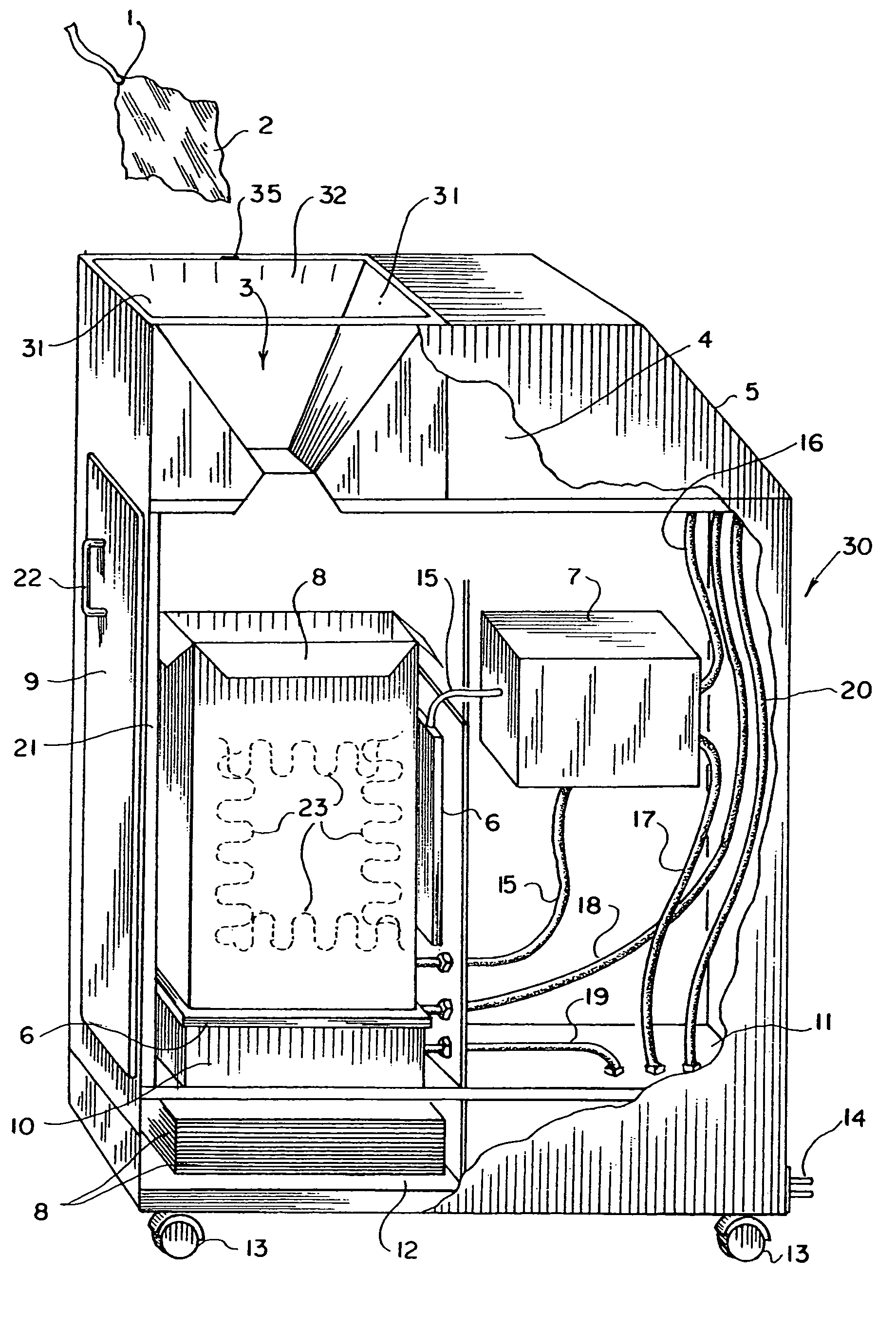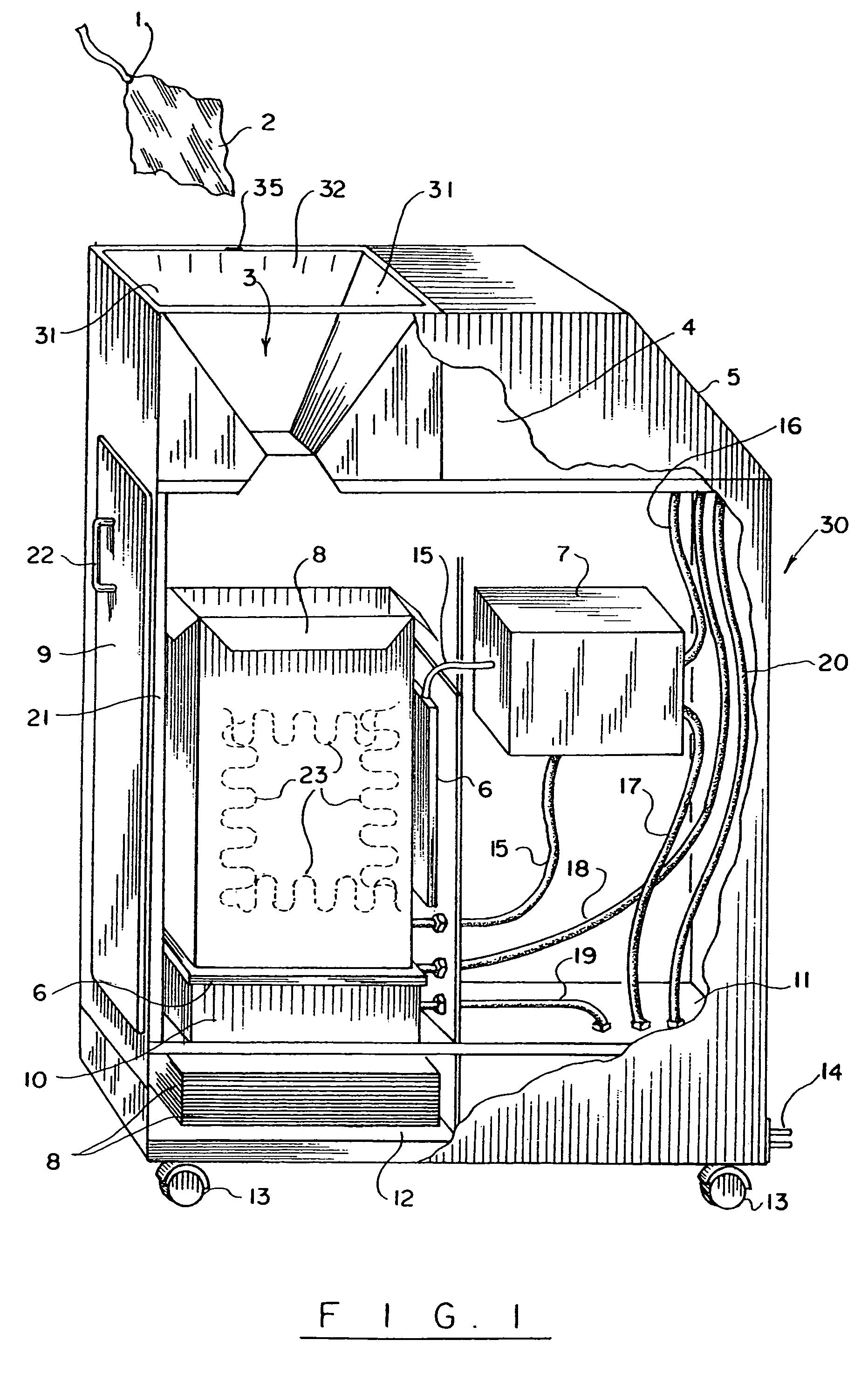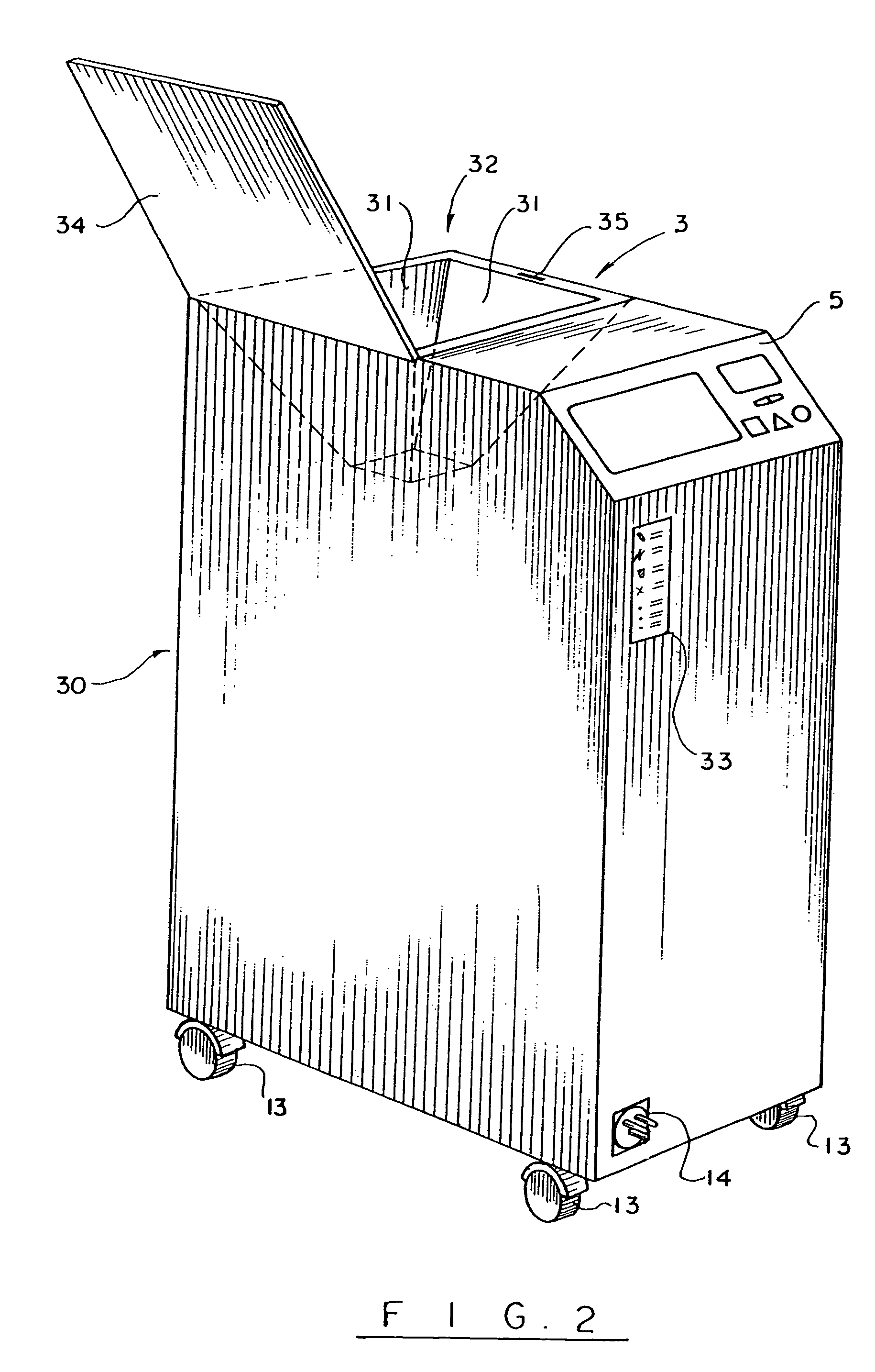Automatic surgical sponge counter and blood loss determination system
a sponge counter and automatic technology, applied in the field of automatic surgical sponge counter and blood loss determination system, can solve the problems of not using removable disposable bags, device cannot distinguish between different sponges, and the risk of sponges being retained inside patients, so as to prevent the retention of sponges inside patients and eliminate dangerous and time-consuming tasks
- Summary
- Abstract
- Description
- Claims
- Application Information
AI Technical Summary
Benefits of technology
Problems solved by technology
Method used
Image
Examples
Embodiment Construction
[0108]The first embodiment of the present invention, automatic surgical sponge counter and blood loss determination apparatus 30, is shown in FIGS. 1 through 5.
[0109]The device (See FIG. 1) takes the place of a kickbucket which is now in use in operating rooms around the world. It is mobile (mounted on wheels 13, powered by rechargeable battery 11), compact in size (30″×18″×18″, for example) and easy to operate. During an operation all surgical sponges 2 are deposited into the apparatus 30 by dropping them into a receptacle 32 having sloped sides 31 leading to an opening 3 at the top of apparatus 30. Receptacle 32 preferably has dimensions of 15″ by 16″, more preferably has dimensions of 16″ by 18″, and most preferably has dimensions of 18″ by 18″. The top of receptacle 32 is preferably about 20-40″ above the floor, more preferably about 25-35″ above the floor, and most preferably about 30″ above the floor. Opening 3 preferably has dimensions of from 4″ by 5½″ to 6½″ by 8½″, and mor...
PUM
 Login to View More
Login to View More Abstract
Description
Claims
Application Information
 Login to View More
Login to View More - R&D
- Intellectual Property
- Life Sciences
- Materials
- Tech Scout
- Unparalleled Data Quality
- Higher Quality Content
- 60% Fewer Hallucinations
Browse by: Latest US Patents, China's latest patents, Technical Efficacy Thesaurus, Application Domain, Technology Topic, Popular Technical Reports.
© 2025 PatSnap. All rights reserved.Legal|Privacy policy|Modern Slavery Act Transparency Statement|Sitemap|About US| Contact US: help@patsnap.com



